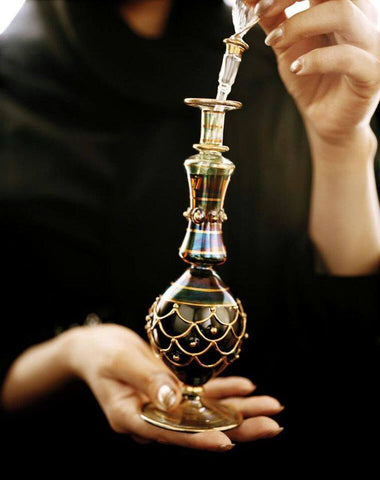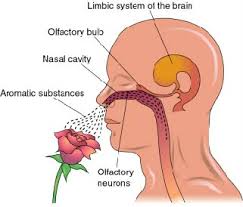Pheromone for Women
Pheromone is a chemical substance that is secreted and released by humans or animals into the environment that affects the behavior of the other sex. They are then detected via the nose by the help of Vomeronasal organ. It has receptors that are extremely sensitive to any pheromones that are lingering in the air. Pheromones for women have been successfully developed in trusted science labs to improve your attractiveness to men. If you want to attract the opposite sex and ensure that male shows the same affection for you, there are pheromone perfumes and spray products that work best in delivering impressive results.

How does pheromone for her work?
The Vomeronasal organs are the receptors in the nose that are responsible for detecting the pheromones. Once it is detected, it travels through the nose stimulating the hypothalamus present in the brain. This part of the brain that produces emotions and emotional responses. These signals elicit an internal sexual response, arousal or sexual desire.
The influences of olfactory on human mate choice
The most polymorphic region of the genome is the Human Leukocyte Antigen (HLA). It helps code for the proteins that intercedes the human immune response. Balancing the selection can help maintain the polymorphism and deviations is indicated by certain populations from the intended frequencies of genes. According to the studies into olfactory preferences, they have supported this hypothesis suggesting that females tend to prefer the scent of males with variant HLA to their own.
There are implications for the theory of mate preference driven by the human leukocyte antigen as the Androstenone molecules inhibit the immune system. In this article, we are going to look at the study findings investigating the olfactory preference in humans. There has been a proposal for the mechanism of maintaining the polymorphism of both pathogen and non-pathogen linked models.
Mate Choice at the human leukocyte Antigen (HLA)
Both human and animal studies support for discriminative mate choice based on the major histocompatibility complex (MHC) haplotype. The most desirable MHC haplotype have proved the findings to be inconclusive. The semi free populations of man-drills having little migration detected a strong disassortative mating which results to a negative relatedness that is coefficient between partners. The individual female preference and the effect of HLA disassortative should be taken with the stipulation that they are dependent on context and likely to vary over time.
The most desirable haplotype
Alleles show co-dominance in the HLA. There is an effect that the heterozygotes have the ability to respond to a vast array of non-self-pathogenic antigens. This is because they can bind to and avail double the foreign peptides compared to the homozygotes. The cell surface membrane receives pathogenic cell fragments from the HLA molecules. A bigger percentage of these molecules would confer a larger pathogen resistance. A proposal has therefore been made that the natural selection would favor the heterozygotes. According to the red queen hypothesis, we can draw an assumption that new combinations of genes are needed in every generation to counter currently the parasite that is dominant.
The expression of HLA genes might also have physical constraints. There is an inverse relationship between the T-cell collection and MHC diversity. If an individual has the necessary MHC molecules required to counteract all potential pathogens, it is most likely that they have no T-cells left to give the response. This is due to the self-reactive T-cells. There are also suggestions that females seek to mingle with individuals whose genes will best complement their own.
However, there will be certain requirements to do this at the level of the HLA. This includes;
- There is a wide disparity in the resistance genes of the population
- Females are knowledgeable about their individual immune genes
- They would need to make decisions according to the fluctuating pressures
- They have the ability to determine the immune genotype of their potential partners
Most of the studies have found that maximum heterozygosity is not often appealing because the resistance can be recessive. Instead, the intermediate values of allele matches tend to confer the greatest fitness. Rather than choosing the maximally heterozygous partners, females will go for the optimal ones. Another argument made an alternative hypothesis that pathogens will develop mechanisms to evade the conferred immunity by typical HLA genotypes. Heterozygosity provides the largest resistance range and the homozygous individuals are known to have a higher resistance against particular infectious diseases.

Olfactory HLA responses
Of all beings, humans are known to have the most highly scented sebaceous and apocrine glands. According to the studies, it has been suggested that the axillary apocrine gland aggregation is a scent organ. There is a higher chance that mates are always chosen through odor with regards to immune functionality. Also, humans have the ability to discriminate potential mates based on the odors derived from HLA.
There is a certain criterion used for body odor to be termed as an effective signal. They must be trustworthy in the case of the HLA and body odor. It should be an ideal indicator of immunocompetence. Another element is that various individuals have to produce different unique odors. The body odor has a great genetic component as suggested by the twin studies. MHC is known to produce body odors that are individually unique. The olfactory system has also proved to be responsive to pictograms of an odorant despite the fact that humans have long been thought to be microsmatic.
Further studies into the olfactory preferences
The concept of odor as a secondary sexual trait was first studied by Wedekind et al. Furi and Wedekind replicated the results subsequently despite the fact that their initial results had been criticized. To address a few concerns, they had to alter the experimental design. It has stemmed down through other generations each one coming with different versions of the study. Other studies reported that the behavior in a relationship can be influenced by the degree of HLA allele sharing. Garver-Apgar et al found that women who have similar HLA partners are likely to engage in infidelity and their partners may be sexually unattractive.
Robert CS and J.Little also found out that there were some differences in odor preferences associated with HLA between married and single women. Unlike single women, those who were married found that the scent of HLA dissimilar men was more attractive. These results were then interpreted as evidence that women look for certain attributes in partners with extra pairs. It is as a means to enhance the heterozygosity in their offspring.
The results according to this study coincide with the hypothesis that humans look down upon at the HLA level with regards to their partners. They also seek out a partner who has HLA genes that are complementary to their own. Since all these studies have varied results, it might be early to make the final decision on the most desirable HLA haplotype. The subtle difference in the rest of the hypothesis makes it difficult to disentangle the discrepancies in results.
The sexual signals of immunocompetence – Androstenes
There are other theories that suggest indicators of immunocompetence as Androstenes, androstenone, and androstenol. They are also sex hormones whose structure is similar to the testosterone. Androstenone produces a musk-like odor, while the androstenone releasing the characteristic sweat odor. A large component of human sweat is formed by the Androstenes. Men tend to have an inhibitory effect on their immune system and produce more Androstenes than women. Therefore, it is believed that the honest signal of mate quality is the Androstenes.
Males who were found to be immunoincompetent or ill were not capable of feigning such a signal without encountering any risks. Pheromones have the ability to produce both short-term as well as long term behavioral changes. Menstrual synchrony is released by the female odors while male odors have an effect that is regulatory on the menstrual cycle. This is known to be the Whitten effect. It has also been found that both men and women rate stimuli friendlier in the presence of androstenol. The faces of males have been rated as being the most attractive when women put on androstenone-impregnated masks. The fittest immune systems should be more appealing if the attractiveness of a potential mate has been related to the production of androstene. They have the ability to produce androstene-derived compounds.
However, this appears to prohibit the hypothesis that women choose mates who have HLA haplotypes that are complimentary with types to their own. There is no guarantee of immunocompetence with the HLA dissimilarity. Those who retain an intermediate amount of heterozygosity or are heterozygous can satisfy this constraint conceivably.
Based on the males' ability to produce heightened levels of androstenes, they would be rated as more attractive having effective immune defenses. Female preferences are spread across men who are more immunocompetent. This is because women sought different HLA genotypes that are complementary with regards to their own. The olfactory cues, therefore, play an essential role in mate preference. It is necessary to carry out the studies assessing both HLA haplotypes and andosterone levels. It clarifies whether they act in tandem or one of the mechanisms is dominant.
Sources : UCL Anthropology; 2UCL Institute of Cognitive Neuroscience.
